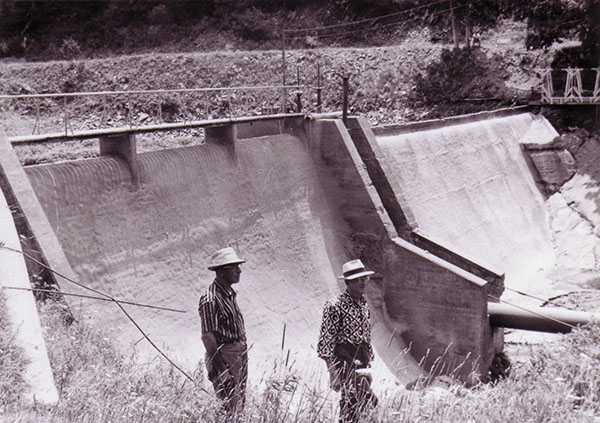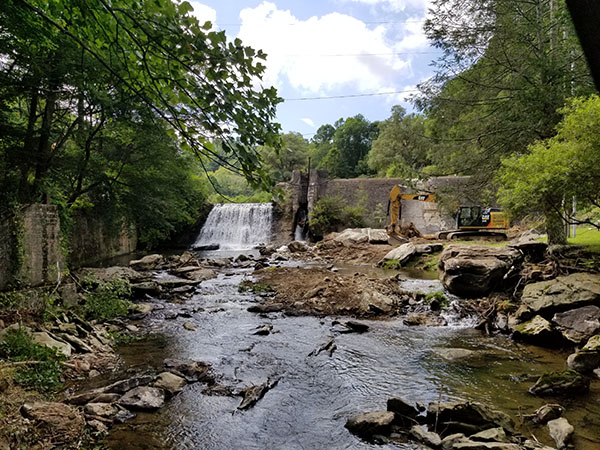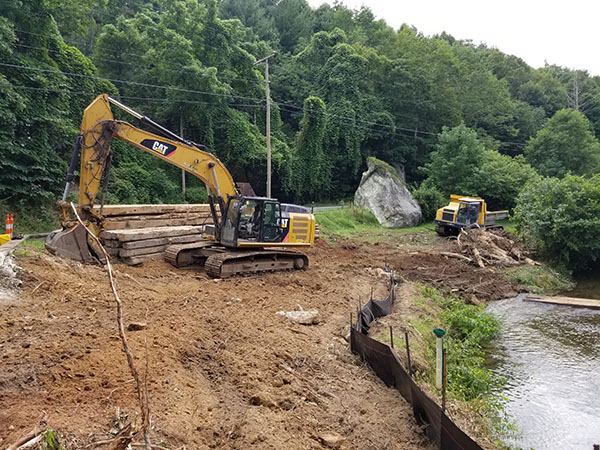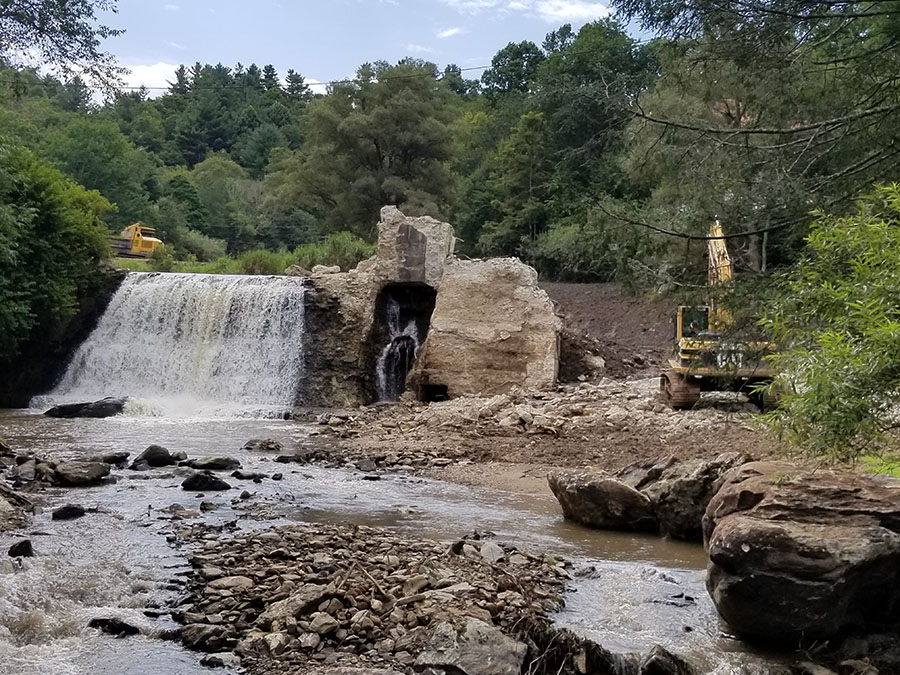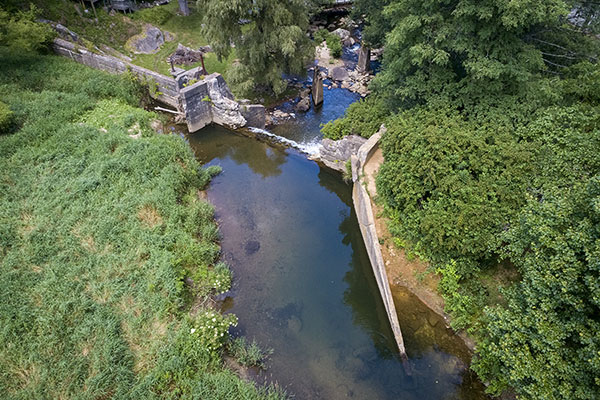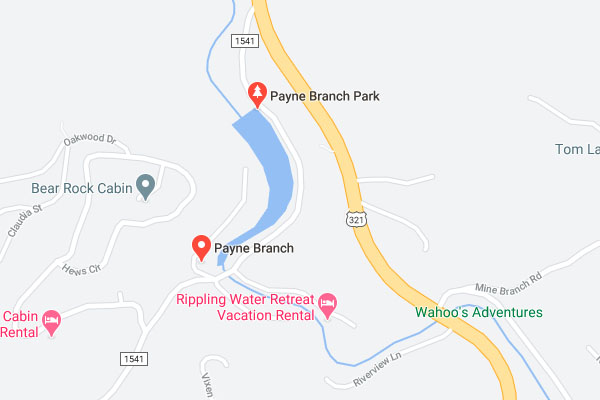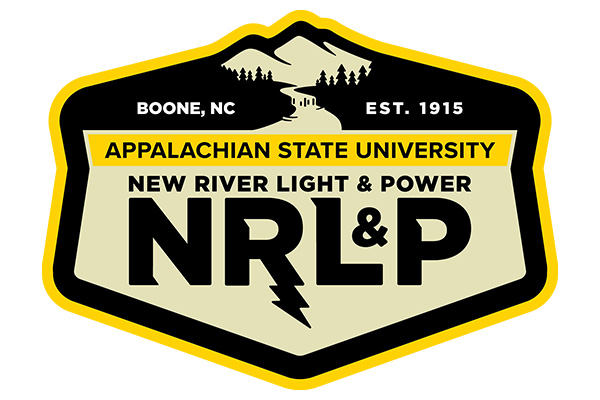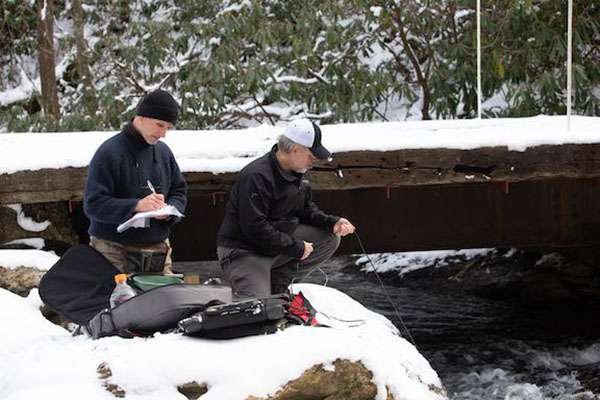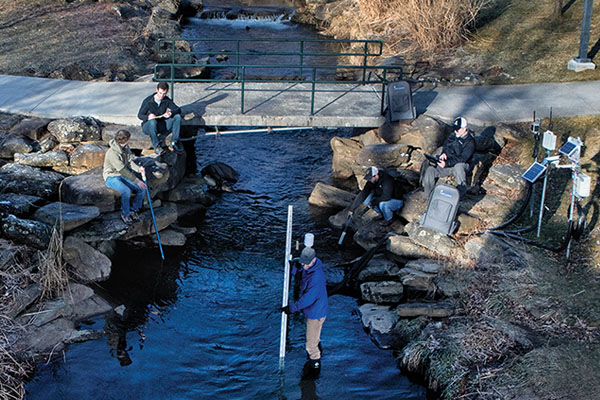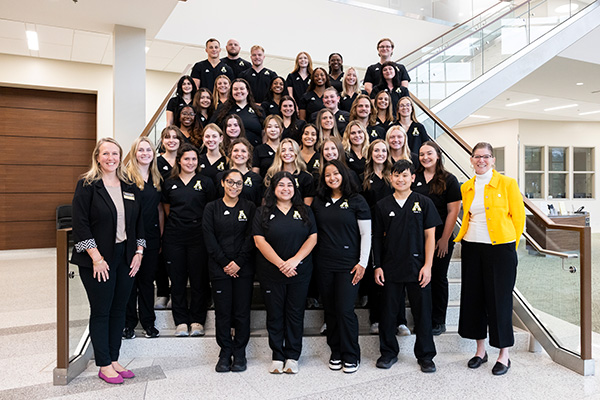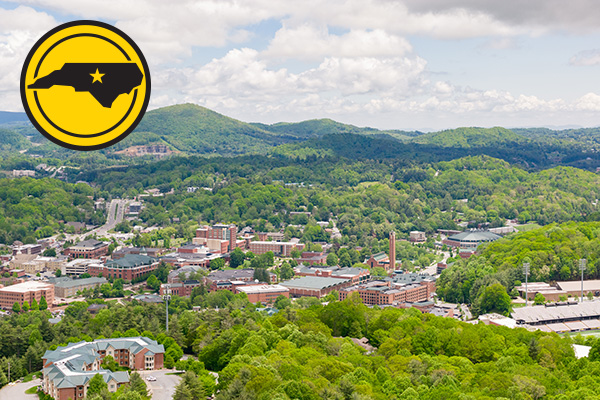BOONE, N.C. — After nearly three months of demolition, construction and restoration efforts, New River Light and Power (NRLP) — Appalachian State University’s nonprofit electric utility — has completed its grant-funded project to remove the historic Payne Branch dam, which was located off Highway 321, just south of Boone, on the Middle Fork of the New River. The project has helped rehabilitate an approximately 1,200-linear-foot section of the river corridor.
App State Chancellor Sheri Everts said the project “is a win-win-win for our environment and the local recreation economy, which also offers important social benefits.”
Matt Makdad, project coordinator and NRLP engineering supervisor, explained, “Removing the dam and restoring this section of the New River is expected to greatly improve water quality and the wildlife habitat in the area while also providing for the expansion of recreational opportunities.”
Approximately 20,000 tons, or 1,250 truckloads, of excess sediment were removed from the site; native trees and shrubs were planted to help stabilize and restore the stream banks; and invasive plant species were removed.
App State’s chief sustainability officer, Dr. Lee Ball, said he is generally in favor of dam removal. “Removing decades of built-up sediment balances the ecosystem and creates a healthier stream,” he said. “It’s so great we can restore this delicate ecosystem in the heart of our community.”
These historical photos of the Payne Branch hydroelectric dam, which was located on the New River’s Middle Fork at Payne Branch Park in Blowing Rock, show damage to the dam caused by the flood of 1940. The dam was operated by New River Light and Power (NRLP), Appalachian State University’s electric utility provider, from 1924–72. NRLP worked to remove the dam from July–December 2020 as part of a grant-funded environmental restoration project that received more than $1.1 million in support from the North Carolina Clean Water Management Trust Fund. Photos courtesy of Appalachian State University Archives
These photos, taken in July 2020, show the beginning of the Payne Branch environmental restoration project undertaken by Appalachian State University’s New River Light and Power. As part of the project, the nearly 100-year-old Payne Branch dam located just south of Boone was removed, helping to restore the New River’s Middle Fork corridor to a more natural state. The dam supplied hydroelectric power to the App State campus and local community from 1924–72. Photos by Matt Makdad
Project impact on the High Country community includes:
- Enhanced water quality for the New River’s Middle Fork.
- Improved habitat and connectivity for the river’s aquatic populations.
- Research opportunities for App State faculty, staff and students.
- A safer, more scenic environment along the Middle Fork Greenway — an in-development project expected to contribute millions to the local economy through tourism.
According to project partner Resource Institute — a Winston-Salem-based nonprofit whose mission is to restore streams, rivers and wetlands — years of damage to and deterioration of the nearly 100-year-old dam led to high levels of river sediment and more stormwater flowing downstream to Boone — both of which can negatively affect water quality and destroy aquatic habitat. The dam’s removal will help alleviate these issues and allow unimpeded passage for wildlife, including fishes, amphibians, crustaceans and aquatic insects, experts involved with the project said.
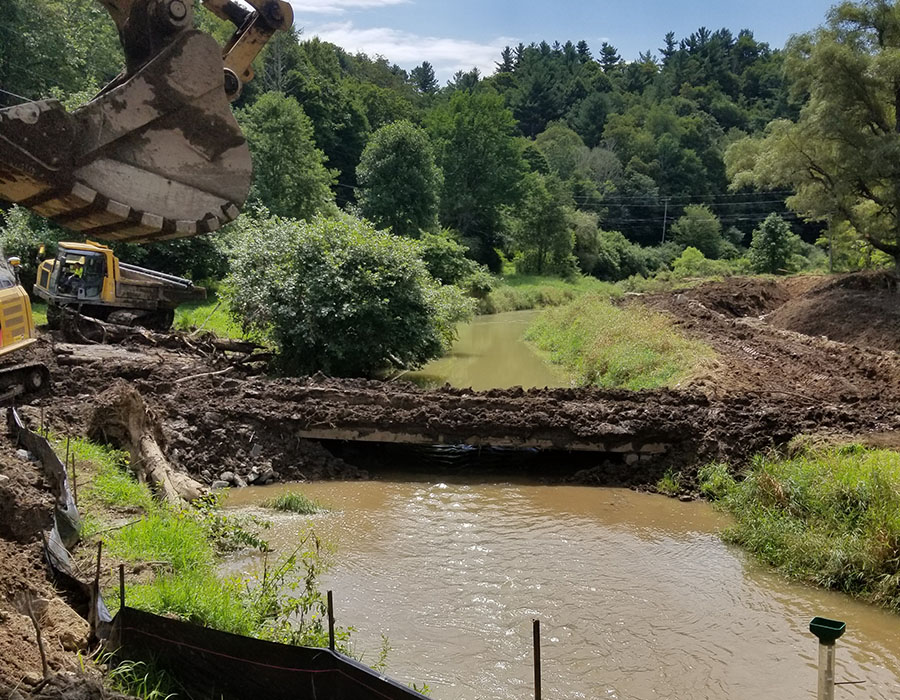
A temporary bridge gave construction vehicles access to both sides of the New River’s Middle Fork corridor where the Payne Branch environmental restoration project took place July–December 2020. The project was completed by Appalachian State University’s New River Light and Power (NRLP) in partnership with the North Carolina Land and Water Fund — which awarded NRLP more than $1.1 million in grant support for the project — and Resource Institute, a Winston-Salem-based nonprofit whose mission is to restore streams, rivers and wetlands. Photo by Matt Makdad
Some of the dam’s vertical wall on the river’s east side remains to stabilize the bank and a small parking area serving Payne Branch Park, adjacent the site. It also serves as a reminder of history: The hydroelectric dam provided power to NRLP’s service area — the town of Boone and the campus community — from its construction in 1924 until it was decommissioned in 1972.
For the project, which was completed over 83 days from July–December 2020, NRLP partnered with the North Carolina Clean Water Management Trust Fund (CWMTF) and Resource Institute. CWMTF awarded NRLP more than $1.1 million in grant funding to support the project, and NRLP committed $200,000 in matching funds. Construction for the project was completed by Brushy Fork Environmental Consulting (BEFC) and North State Environmental.
This video of time-lapse photography shows a portion of the Payne Branch dam removal process, which was completed by Brushy Fork Environmental Construction (BFEC) in partnership with App State’s New River Light and Power. Video courtesy of BFEC
AppAqua research dives into dam removal impact
For the past 10 years — as well as during and after the Payne Branch dam removal — faculty members of the Appalachian Aquatic Science Research Team (AppAqua) have been collecting data at sites up- and downstream of the project and are poised to examine the dam removal’s long-term effects on the river and its aquatic inhabitants. The collected data include measurements of New River’s water depth and discharge, pH and temperature, as well as its conductivity (salinity) and the amount of dissolved oxygen present in the water — all of which indicate the overall health of the river.
The AppAqua Team, whose research is supported by the university’s Research Institute for Environment, Energy and Economics (RIEEE), explores the human–environmental interactions affecting water resources in the Southern Appalachian headwaters, which include the New River.
AppAqua Team member Dr. Derek Martin, an associate professor in the Department of Geography and Planning, is involved with other dam removal and restoration projects. He said one goal of such work is to improve the river ecosystem’s ability to sustain a diverse community of organisms.
Dr. Shea Tuberty, AppAqua Team member and professor of biology, said he and his team found high levels of turbidity — cloudiness due to suspended matter, such as sediment, in water — during some of the most active days of the dam removal. This water disturbance can be harmful to certain aquatic species, including trout — “some of the most sensitive fish in the world,” Tuberty said.
Martin said sediment had built up behind the dam over the years and was also released from the surrounding landscape during the construction process.
“We’d like to know what those impacts are. Does sediment bury eggs? Does it prevent the bugs from existing there? Are their food sources being removed? It could just be a very short time frame where they can’t live there and then they can come back later,” Tuberty said.
One of Tuberty’s graduate students, Madison Suttman, of Dakota, Illinois, is using samples from four sites up- and downstream of the former Payne Branch dam — collected before, during and after the project — for the basis of her master’s thesis. She is pursuing a Master of Science in biology with a concentration in ecology and evolutionary biology.
Suttman is assessing sediment loading — the amount of rocks, silt and minerals moving through a river at one point in time — resulting from the dam’s removal, as well as the project’s long-term impacts on the river’s community of aquatic macroinvertebrates, which are animals such as snails, worms, crayfish and insects.
She said these macroinvertebrates serve as bioindicators, meaning they can provide insights into the health of the river’s entire ecosystem. They also serve as food sources for fish and other aquatic species.
Excess sediment that fills in the gaps between rocks and boulders in the New River reduces or even eliminates the habitat these invertebrates depend upon for finding food and hiding from predators, Suttman explained. This habitat reduction/removal also inhibits their reproduction by limiting where they can safely lay their eggs, she added.
“Once there is no longer a big difference between the sets of samples from upstream and downstream, we can assume that the primary impact on the ecosystem is complete and we’ll know the area is returning to a more natural state,” she said.
According to Tuberty and Martin, several variables — including the size of the river, the size of the dam, the dam’s location on the river and the season in which the dam is removed — must be taken into account when determining the ecological recovery time for a river after a dam’s removal.
Given the size of the New River section where the Payne Branch dam was located, Tuberty said he estimates it will take approximately three months before positive effects of the restoration effort will be apparent in the river’s aquatic communities.
Construction for the new design of the New River channel where the Payne Branch dam was removed is shown in this brief video of time-lapse photography. This work was completed by Brushy Fork Environmental Construction (BFEC) in partnership with App State’s New River Light and Power. Video courtesy of BFEC
Community connections and economic boons
NRLP’s Makdad said the removal of the dam has made for a more scenic environment at the adjacent Payne Branch Park — one of many High Country outdoor recreation areas that will be connected by the in-development Middle Fork Greenway (MFG) — a Blue Ridge Conservancy project in partnership with the Town of Blowing Rock, Town of Boone and Watauga County.
This multiuse recreational trail will join the Boone Greenway Trail to connect the Blowing Rock and Boone communities, providing an approximately 10-mile path for pedestrians and cyclists.
“Payne Branch Park has been a public access picnic and fishing area for about 15 years and now that the dam is gone, it is a safer and more accessible area,” said the Blue Ridge Conservancy’s Wendy Patoprsty ’14, director of the MFG project and a graduate of App State’s Master of Arts in geography program.
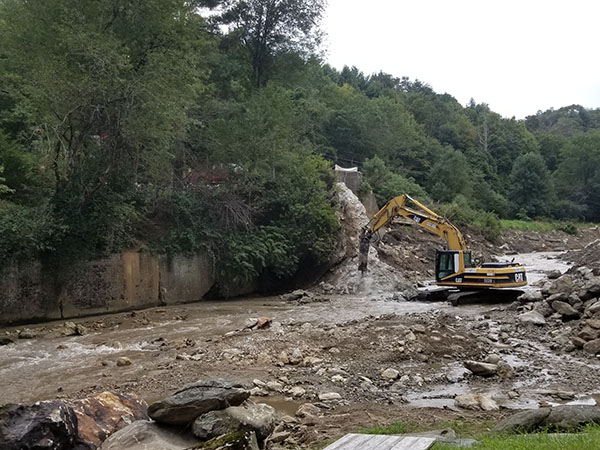
In this photo taken mid-September 2020, an excavator removes remnants of the concrete Payne Branch dam, which was operated by Appalachian State University’s electric utility, New River Light and Power (NRLP). The dam was removed over a period of 83 days from July–December 2020 as part of NRLP’s grant-funded environmental restoration project for a portion of the New River’s Middle Fork. Photo by Matt Makdad
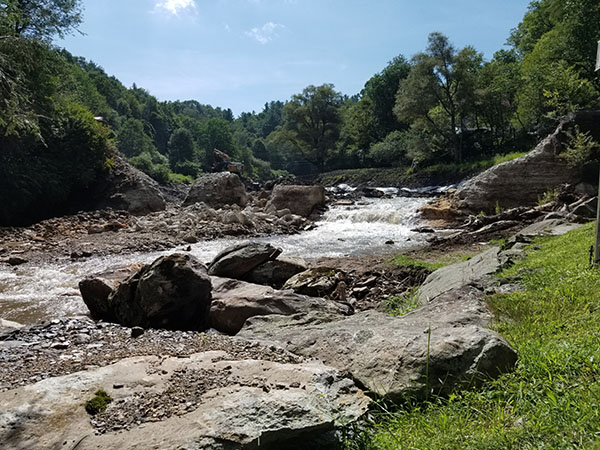
A free-flowing New River, with most of the Payne Branch dam removed, is shown in this photo from the beginning of September 2020. The nearly 100-year-old hydroelectric dam was removed as part of a grant-funded environmental restoration project undertaken by Appalachian State University’s New River Light and Power. Photo by Matt Makdad
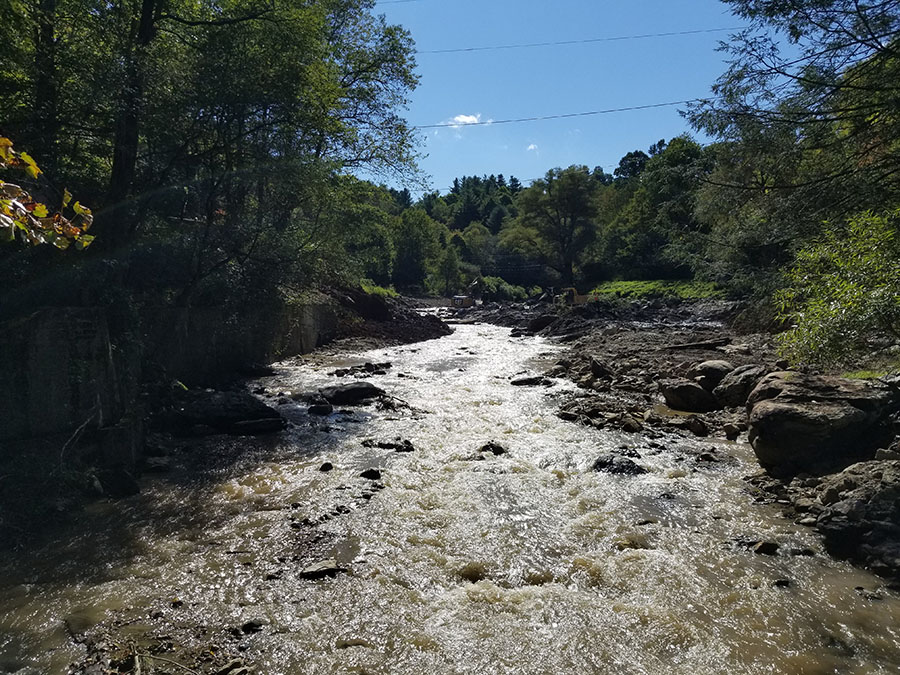
This mid-stream shot, taken in late September 2020, shows the unimpeded flow of the Middle Fork of the New River, where the Payne Branch dam was removed as part of the grant-funded environmental restoration project completed by New River Light and Power — Appalachian State University’s electric utility. North Carolina Clean Water Management Trust Fund awarded NRLP more than $1.1 million in support of the project, through which approximately 1,200 linear feet of the river and adjacent wetland areas has been rehabilitated. Photo by Matt Makdad
At the park, a trail with two bridges, a picnic area, benches and informational signs designed to educate visitors on the New River, the history of Payne Branch dam and the area’s native flora and fauna will be installed as part of the greenway project, Patoprsty shared.
Tuberty said he believes the trail’s convenient access to miles of well-known fishing areas along the New River, including the trout habitat at the Payne Branch site, will likely be attractive to trout anglers and fly-fishers — a tourism sector that, on average, yields hundreds of millions of dollars in economic revenue for Western North Carolina each year, according to the state’s Wildlife Resources Commission.
According to a 2017 economic impact study by the Institute for Transportation Research and Education, greenway users are expected to make 38,000 trips on the trail annually, with approximately 32%, or 12,160, of users being tourists who could potentially contribute more than $6 million to the local economy. Once complete, the Middle Fork Greenway will connect to North Carolina’s Blue Ridge Parkway and Mountains-to-Sea Trail.
What do you think?
Share your feedback on this story.
Appalachian biology professor Dr. Shea Tuberty and former FEMA Administrator Brock Long discuss how developing a culture of preparedness fosters resiliency
About App State's New River Light and Power
For 110 years, New River Light and Power (NRLP) — a nonprofit electric utility operated by Appalachian State University — has provided reliable power to residents of Western North Carolina. The utility currently serves approximately 9,000 residential and commercial customers in and around Boone, including the university. NRLP is dedicated to expanding access to higher education, contributing approximately $650,000 annually to the university’s general scholarship fund. Additionally, the utility awards NRLP scholarships to support graduating Watauga County high school seniors pursuing an App State education, as well as those interested in pursuing a career in linework. NRLP holds the American Public Power Association’s Reliable Public Power Provider and Smart Energy Provider designations, recognizing its commitment to safety, efficiency, renewable energy and environmental stewardship. Learn more about App State’s New River Light and Power at https://nrlp.appstate.edu.
About the Research Institute for Environment, Energy and Economics
Since 2008, Appalachian State University’s Research Institute for Environment, Energy and Economics (RIEEE) has fostered interdisciplinary research on the environment, energy and economics, especially the areas in which these subjects intersect. The institute serves as an umbrella organization for three research centers: the Appalachian Energy Center, Center for Economic Research and Policy Analysis, and Southern Appalachian Environmental Research and Education Center. Additionally, the institute manages and supports App State’s student-led solar vehicle team, Team Sunergy — an exemplary model of the integrative and experiential student learning, leadership and innovation opportunities the institute seeks to foster at App State. Learn more at https://rieee.appstate.edu.
About the College of Arts and Sciences
The College of Arts and Sciences (CAS) at Appalachian State University is home to 17 academic departments, two centers and one residential college. These units span the humanities and the social, mathematical and natural sciences. CAS aims to develop a distinctive identity built upon our university's strengths, traditions and locations. The college’s values lie not only in service to the university and local community, but through inspiring, training, educating and sustaining the development of its students as global citizens. More than 6,800 student majors are enrolled in the college. As the college is also largely responsible for implementing App State’s general education curriculum, it is heavily involved in the education of all students at the university, including those pursuing majors in other colleges. Learn more at https://cas.appstate.edu.
About Appalachian State University
As a premier public institution, Appalachian State University prepares students to lead purposeful lives. App State is one of 17 campuses in the University of North Carolina System, with a national reputation for innovative teaching and opening access to a high-quality, cost-effective education. The university enrolls more than 21,000 students, has a low student-to-faculty ratio and offers more than 150 undergraduate and 80 graduate majors at its Boone and Hickory campuses and through App State Online. Learn more at https://www.appstate.edu.


